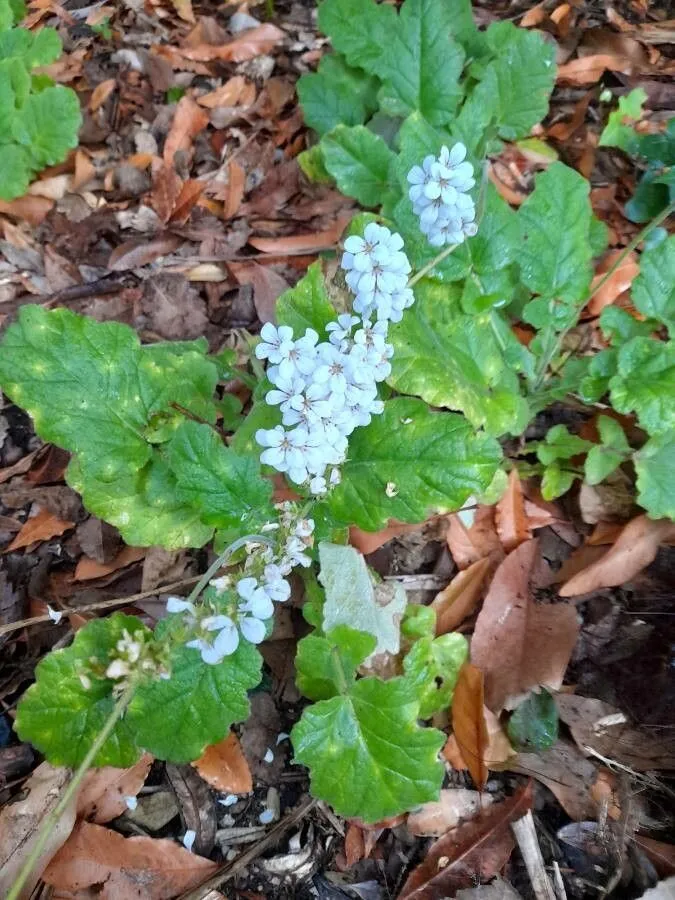
Author: L.
Bibliography: Sp. Pl.: 23 (1753)
Year: 1753
Status: accepted
Rank: species
Genus: Salvia
Vegetable: False
Observations: C. & E. U.S.A.
Lyre-leaf sage, scientifically known as Salvia lyrata, is a distinctive and versatile perennial herb that belongs to the mint family, Lamiaceae. This intriguing plant, first documented by the celebrated botanist Carl Linnaeus in 1753, has a rich presence across the central and eastern regions of the United States.
The name lyre-leaf sage aptly describes the unique shape of its foliage, which is reminiscent of a lyre, a stringed musical instrument. The leaves are often marked with deep lobes and can display a captivating mix of green and purple hues. This foliage is not only aesthetically pleasing but also functional, forming a basal rosette that lies close to the ground.
During its blooming season, which typically spans from late spring to early summer, lyre-leaf sage produces striking whorls of tubular flowers on upright, square stems. The flowers, usually a soft lavender to pale blue, are not just a feast for the eyes but also a boon for pollinators. Bees, butterflies, and hummingbirds are frequently drawn to the blooms, enhancing the biodiversity of their habitats.
Beyond its ornamental value, Salvia lyrata is hardy and adaptable, thriving in a variety of soil types, including sandy, loamy, and clay soils. It prefers well-drained conditions and can tolerate both full sun and partial shade, making it an excellent choice for gardeners looking to add resilient and low-maintenance beauty to their landscapes.
Ecologically, lyre-leaf sage plays a critical role in its native habitats. Its presence helps prevent soil erosion, provides food and habitat for a range of wildlife, and contributes to the overall health of native ecosystems. As such, it is a favored choice for ecological restoration projects and naturalized garden settings.
In summary, lyre-leaf sage (Salvia lyrata) is a remarkable plant that combines aesthetic charm with ecological significance. Its adaptability and appeal to pollinators make it a valuable addition to both cultivated and wild landscapes across its native range in central and eastern United States.
Eng: cancerweed, lyre-leaf sage, lyreleaf sage
Swe: lyrsalvia
En: Lyre-leaf sage, Cancerweed, Lyreleaf sage
Cs: Šalvěj lyrovitá
Sv: Lyrsalvia
Zh-tw: 琴葉鼠尾草
Taken Jun 9, 2020 by Lime Greenery (cc-by-sa)
Taken Mar 19, 2021 by Norma Villalta (cc-by-sa)
Taken Feb 15, 2022 by Rachel Wilkes (cc-by-sa)
Taken Mar 2, 2022 by Ball Darren (cc-by-sa)
Taken Apr 27, 2022 by jimseng jimseng (cc-by-sa)
© copyright of the Board of Trustees of the Royal Botanic Gardens, Kew.
Taken Mar 2, 2019 by Hannah Cotton (cc-by-sa)
Taken Apr 27, 2022 by jimseng jimseng (cc-by-sa)
Taken Mar 2, 2022 by Ball Darren (cc-by-sa)
Taken Apr 24, 2019 by Donald Huffman (cc-by-sa)
Taken Mar 17, 2020 by Niki Torres (cc-by-sa)
Taken May 5, 2015 by EOL − jessicarichardson (cc-by-nc)
Taken May 8, 2015 by EOL − ksmith (cc-by-nc)
Taken Nov 28, 2015 by EOL − lakekoshare (cc-by-nc)
Taken May 1, 2021 by Lily Jones (cc-by-sa)
Taken Mar 2, 2022 by Ball Darren (cc-by-sa)
Taken Apr 4, 2019 by Eli Small (cc-by-sa)
Taken Apr 4, 2019 by Eli Small (cc-by-sa)
Taken Jan 1, 1900 by EOL − Gerrit Davidse (cc-by-nc-sa)
Taken Apr 28, 2003 by EOL − Steven J. Baskauf (cc-by-nc-sa)
Taken Apr 28, 2022 by Jason Smith (cc-by-sa)
Taken Jul 19, 2021 by Latuomramo (cc-by-sa)
Taken Apr 10, 2020 by Brad Kelley (cc-by-sa)
Taken Apr 10, 2020 by Brad Kelley (cc-by-sa)
Taken May 11, 2011 by EOL − Ron Thomas (cc-by-nc-sa)
Taken May 14, 2022 by Hong Wang (cc-by-sa)
Taken Jan 1, 1900 by EOL − Gerrit Davidse (cc-by-nc-sa)
Growth habit: Forb/herb
Family: Myrtaceae Author: (F.Muell.) K.D.Hill & L.A.S.Johnson Bibliography: Telopea 6: 402 (1995) Year: 1995 Status:…
Family: Rubiaceae Author: Pierre ex A.Froehner Bibliography: Notizbl. Bot. Gart. Berlin-Dahlem 1: 237 (1897) Year:…
Family: Sapindaceae Author: Koidz. Bibliography: J. Coll. Sci. Imp. Univ. Tokyo 32(1): 38 (1911) Year:…
Family: Asteraceae Author: A.Gray Bibliography: Pacif. Railr. Rep.: 107 (1857) Year: 1857 Status: accepted Rank:…
Family: Fabaceae Author: Medik. Bibliography: Vorles. Churpfälz. Phys.-Ökon. Ges. 2: 398 (1787) Year: 1787 Status:…
Family: Aspleniaceae Author: (Cav.) Alston Bibliography: Bull. Misc. Inform. Kew 1932: 309 (1932) Year: 1932…